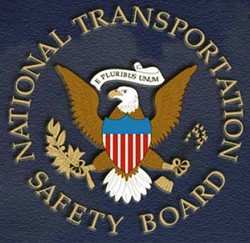Wed, Apr 24, 2024
Mooney M20K Fatal Accident; Pilot Loses Control in IMC
The NTB has concluded its investigation into an accident involving a Mooney M20K aircraft that resulted in the death of the pilot. The crash occurred on June 10, 2022, shortly after takeoff from an airport in Camarillo, California. The aircraft was destroyed upon impact after the pilot lost control during flight.

The NTSB's final report attributes the probable cause of the accident to the pilot's spatial disorientation and subsequent loss of control of the aircraft after entering IMC. These conditions were characterized by low visibility, mist, and cloud tops ranging from 400 to 1,600 feet.
On the day of the accident, the instrument-rated pilot, who was unfamiliar with the airport, planned a flight to his home base. Despite the challenging weather conditions, which were communicated during a pre-flight briefing, the pilot filed an IFR flight plan, requesting VFR-on-top. After a routine engine run-up and takeoff, the pilot likely entered the clouds but failed to establish contact with the departure controller as instructed.
Witness accounts and video evidence suggest that the aircraft was flying low and perpendicular to the takeoff direction without any signs of mechanical failure before it impacted the ground near a freeway. Investigations confirmed that the engine was functioning at high power at the time of the crash, and there were no pre-impact mechanical malfunctions or failures. The aircraft was also appropriately configured for the initial takeoff climb, dismissing the possibility of pilot error in aircraft configuration.
Further examination revealed the pilot was not instrument current; he had not met the recent flight experience requirements to operate under IFR. The pilot had significant cardiovascular health issues, including moderate coronary artery disease and an implanted pacemaker/defibrillator, which posed an increased risk of sudden impairment. However, no definitive forensic evidence suggested an incapacitating event occurred just before the crash.
The absence of ADS-B and radar tracking indicated that the aircraft did not reach a sufficient altitude after entering the clouds, supporting the theory of spatial disorientation. This condition can cause a pilot to lose sense of direction and aircraft attitude, leading to a loss of control.
The NTSB's investigation underscores the importance of adhering to flight and medical certification requirements, especially under challenging flight conditions. This accident illustrates the dangers of spatial disorientation and the need for rigorous compliance with aviation safety standards.
More News
Aero Linx: Transport Canada We are a federal institution, leading the Transport Canada portfolio and working with our partners. Transport Canada is responsible for transportation p>[...]
Gross Navigation Error (GNE) A lateral deviation from a cleared track, normally in excess of 25 Nautical Miles (NM). More stringent standards (for example, 10NM in some parts of th>[...]
From AirVenture 2017 (YouTube Edition): Flight-Proven Booster On Display At AirVenture… EAA AirVenture Oshkosh is known primarily as a celebration of experimental and amateu>[...]
Aircraft Parachute System (CAPS) Was Deployed About 293 Ft Above Ground Level, Which Was Too Low To Allow For Full Deployment Of The Parachute System Analysis: The day before the a>[...]
Also: 48th Annual Air Race Classic, Hot Air Balloon Fire, FAA v Banning 100LL, Complete Remote Pilot The news Piper PA-18 Super Cub owners have been waiting for has finally arrived>[...]
 ANN's Daily Aero-Linx (06.29.25)
ANN's Daily Aero-Linx (06.29.25) ANN's Daily Aero-Term (06.29.25): Gross Navigation Error (GNE)
ANN's Daily Aero-Term (06.29.25): Gross Navigation Error (GNE) Classic Aero-TV: Anticipating Futurespace - Blue Origin Visits Airventure 2017
Classic Aero-TV: Anticipating Futurespace - Blue Origin Visits Airventure 2017 NTSB Final Report: Cirrus SR22
NTSB Final Report: Cirrus SR22 Airborne Affordable Flyers 06.26.25: PA18 Upgrades, Delta Force, Rhinebeck
Airborne Affordable Flyers 06.26.25: PA18 Upgrades, Delta Force, Rhinebeck



